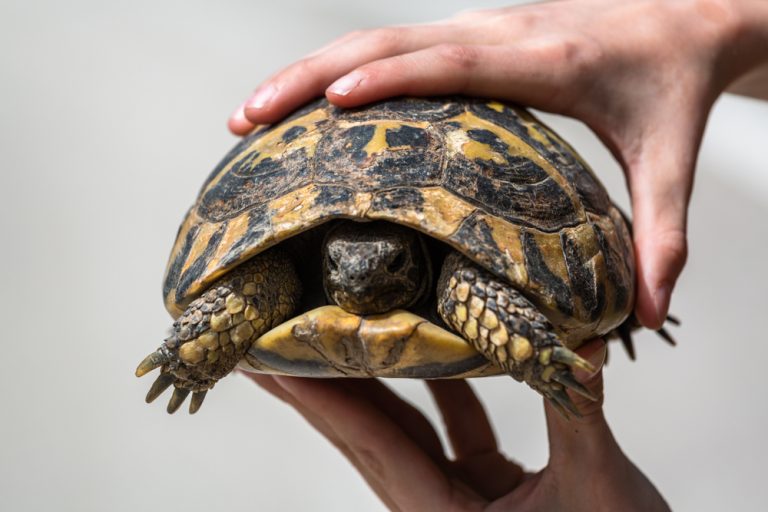
Leopard tortoises are among the most captivating reptile species, known for their striking patterns and significant ecological roles. As conservation efforts intensify, the integration of advanced technologies has opened new avenues for studying these fascinating animals. Specifically, exploring innovative tracking technologies for wild Leopard tortoises has provided researchers with invaluable data, enhancing our ability to protect and preserve their populations.
The Importance of Tracking Technologies
Tracking technologies have revolutionized wildlife research, allowing scientists to gather detailed information about animal behaviors, movements, and habitats with minimal disturbance. For Leopard tortoises, these tools are essential for understanding their ecology and addressing conservation challenges.
GPS Tracking Devices
- Precision Data Collection: GPS tracking devices are attached to the tortoises’ shells, providing precise location data at regular intervals. This information is crucial for mapping their movements, identifying key habitats, and understanding seasonal patterns.
- Behavioral Insights: The data collected helps researchers monitor daily activities, feeding habits, and interactions with other species, offering a comprehensive picture of the tortoises’ lives.
Satellite Telemetry
- Remote Monitoring: Satellite telemetry enables continuous tracking of Leopard tortoises in remote areas. This technology reduces the need for physical presence, thereby minimizing stress on the animals and logistical challenges for researchers.
- Long-Term Data: Satellite telemetry supports long-term studies, crucial for observing life cycles, reproductive patterns, and long-term ecological changes.
Applications in Conservation
The detailed data from tracking technologies informs various conservation strategies, ensuring targeted and effective efforts to protect Leopard tortoises and their habitats.
Habitat Protection
- Identifying Critical Areas: Tracking data reveals essential habitats, migration routes, and seasonal changes in habitat use. This information helps prioritize areas for protection and management.
- Threat Mitigation: By understanding the tortoises’ movements, conservationists can identify and mitigate threats such as habitat fragmentation, poaching, and human-wildlife conflict.
Population Management
- Assessing Population Health: Tracking technologies provide data on population dynamics, distribution, and density. This information is vital for assessing the health and viability of tortoise populations.
- Supporting Breeding Programs: Insights from tracking data guide captive breeding and reintroduction programs, ensuring that released individuals are well-adapted to their natural habitats.
Challenges and Future Directions
While tracking technologies offer numerous benefits, they also present challenges that need to be addressed to maximize their potential in wildlife research and conservation.
Technological and Financial Barriers
- Cost and Expertise: The high cost of tracking devices and the need for technical expertise can limit their use, particularly in underfunded conservation projects.
- Animal Welfare: Ensuring that tracking devices do not adversely affect the animals is a priority. Ongoing refinement and miniaturization of devices are necessary to reduce any potential impact.
Technological Advancements
- Miniaturization and Durability: Advances in technology aim to create smaller, more durable tracking devices with longer battery lives, reducing the need for frequent replacements and minimizing disturbance.
- Integration with Other Technologies: Combining tracking data with other technologies, such as drones and artificial intelligence, can enhance data collection and analysis, providing a more holistic understanding of Leopard tortoise ecology.
The Future of Leopard Tortoise Conservation
The integration of innovative tracking technologies marks a significant advancement in the field of wildlife research. These tools provide critical insights that support effective conservation strategies, helping to ensure the survival of Leopard tortoises in the wild.
Collaborative Efforts
- Research Partnerships: Collaboration between researchers, conservation organizations, and technology developers is essential for advancing tracking technologies and their applications.
- Community Involvement: Engaging local communities in conservation efforts and educating them about the importance of Leopard tortoises can foster support and sustainable practices.
Conclusion
The use of advanced tracking technologies in studying Leopard tortoises represents a promising development in wildlife research. By providing detailed data on their movements, behaviors, and habitats, these technologies enable more effective conservation strategies. For further insights on exploring innovative tracking technologies for wild Leopard tortoises, visit Petsomely, where the latest research and conservation efforts are highlighted, offering hope and direction for the future of wildlife preservation.